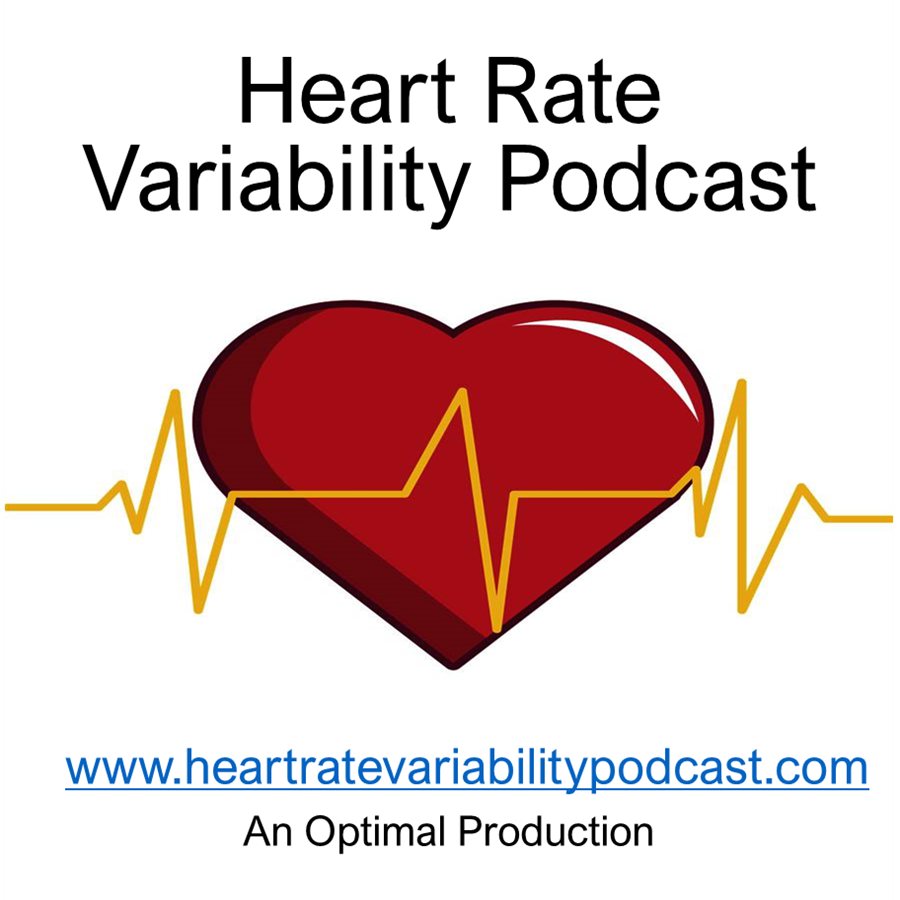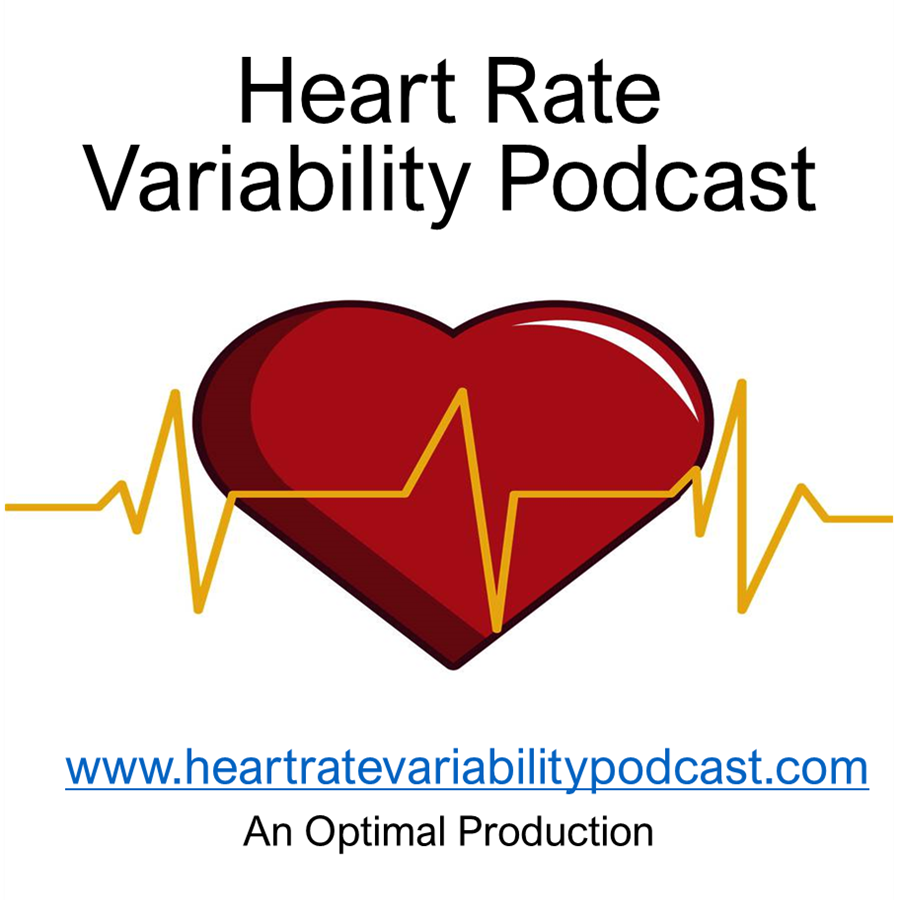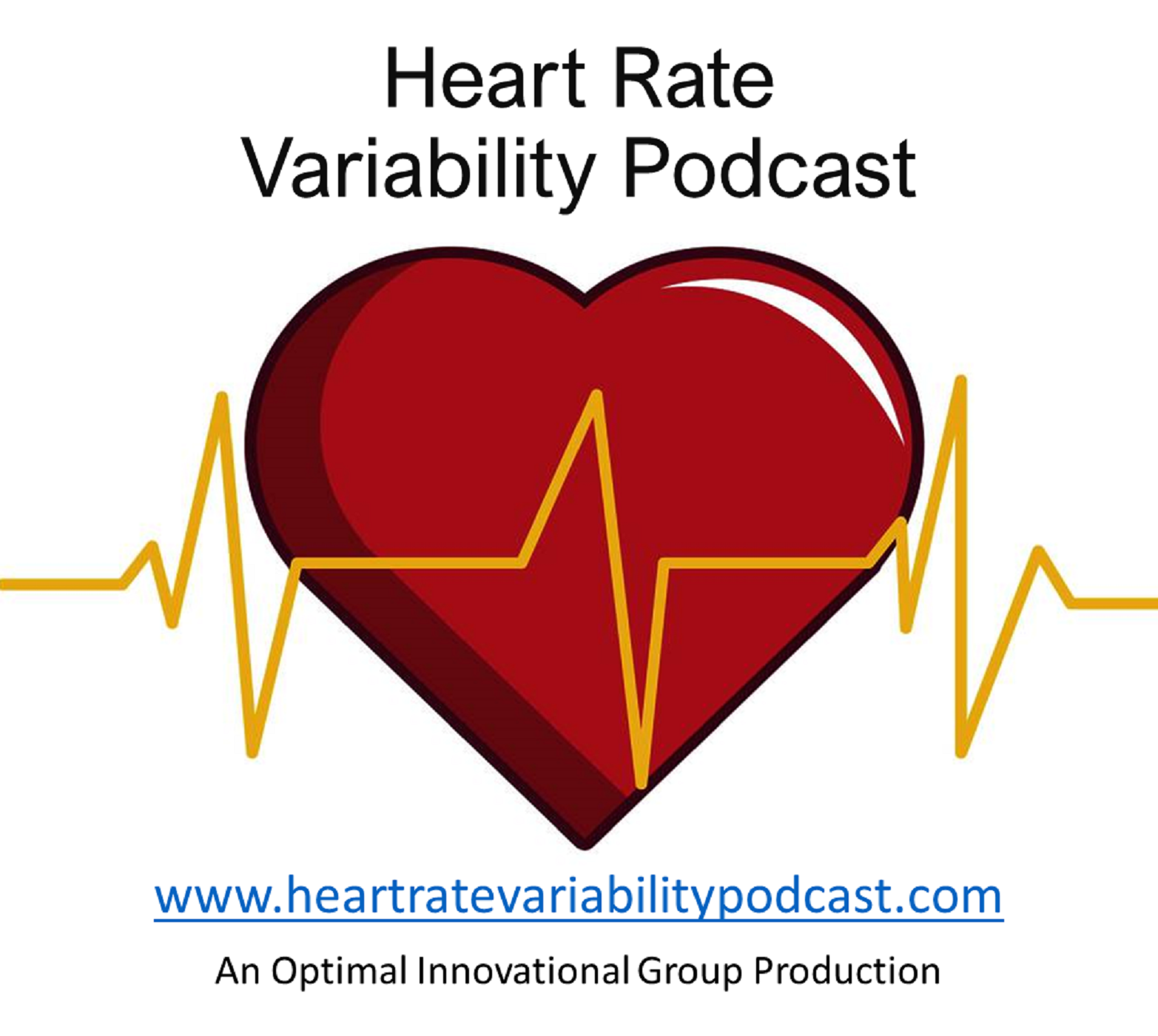Episode Transcript
[00:00:00] Welcome friends to the Heart Rate Variability Podcast. This week in Heart Rate Variability Edition, each week we explore the latest research and news from the world of hrv. Please consider the information in this podcast for informational purposes only and not as medical advice. Always consult your healthcare provider before applying any strategies we discuss.
[00:00:22] This week we have an episode that truly drives home the power of HRV and as a fundamental biomarker for vulnerability, resilience and even prediction. We're going to explore how HRV reveals the physical toll of mental health symptoms in high stress professionals. We'll examine one of the most profound studies we've ever covered, tracing the physiological impact of trauma across three generations. We'll also see how autonomic dysregulation is a key factor in children who experience fainting and how HRV may be able to predict who will recover from a first episode psychosis.
[00:00:57] We'll also discuss a complex study linking metabolic health to HRV in obesity, as well as a new safety study on potential vibration therapy. And we'll kick it all off with some exciting news about HRV hitting the mainstream. Let's go ahead and get started.
[00:01:14] On October 27, 2025, the television station WCCB Charlotte aired a segment on its Metabolic Minute about heart rate variability. I was honored to join Dr. Gary Rollband and Stephen Gage for this broadcast. We had the opportunity to introduce HRV to a broader audience, explaining how it reflects our balance between the sympathetic and parasympathetic nervous systems. HRV is becoming more than a number. It's being recognized as a powerful tool to understand readiness, recovery and long term health.
[00:01:47] Seeing it receive this kind of airtime is incredibly exciting. You you know, I've long believed this metric belongs on the dashboard of every health conscious person.
[00:01:57] It's gratifying to see HRV going mainstream.
[00:02:02] Now that we discussed my television stardom, let's jump into the HRV research. This new study, published in the Journal of Psychiatric Research, is titled Associations between Mental Health Disorder Symptoms and Cardiac Function among Royal Canadian Mounted Police Cadets during the Cadet Training Program.
[00:02:20] This work was led by a large team including Carleton Tekchindani, Nri, Samayoa, Khoury, McGuire, Kretzig and Asmundson. This is the first longitudinal assessment of its kind, tracking 81 RCMP cadets through their 26 week training program. The researchers were looking for links between mental health symptoms like ptsd, depression and anxiety and cardiac function. What is particularly interesting here is that the study highlights the limitations of standard HRV in specific contexts. In addition to hrv, they also employed a more novel tool, seismocardiography, also known as scg. This is a non invasive method that uses an accelerometer on the chest to measure the mechanical function of the heart, not just the electrical timing. The findings were clear. The study examined longitudinal changes referring to how symptoms and heart function evolved together over the 26 weeks. They found that as symptoms of major depressive disorder, generalized anxiety disorder and social anxiety disorder increased, so did metrics indicating poorer cardiac function.
[00:03:31] Specifically, they saw increases in the myocardial performance index, the diastolic performance index and esovolumic relaxation time.
[00:03:42] In simple terms, as the cadets psychological distress increased, their hearts began to exhibit signs of less efficient function, particularly during the parasympathetic phase of the heartbeat. This is a powerful, objective demonstration that mental health symptoms are not just in your head. They have a direct, measurable and potentially damaging impact on the physical performance of the heart, even in a young, physically fit population.
[00:04:08] Sticking with the theme of systemic health, our next study comes from Scientific Reports.
[00:04:13] It's a deep, complex dive into how our metabolism, hormone, hormones and kidneys function are all tied together with hrv. The paper is titled Interplay between Key Metabolic Hormones, Metabolic Factors, Renal Function and Heart Rate Variability in Humans with Obesity Pangwatanopakan, Sitacharun, Wilas, Rusmi, Kyot, Khri, Chai, Wat, Maikayo and Srirawichichai led it. This study offers a comprehensive and integrative assessment.
[00:04:45] Researchers studied 45 participants with obesity and analyzed an extensive data set. The findings provide a clear and concise picture of how these systems are interconnected. First, the group with insulin resistance showed significantly decreased frequency domain, specifically very low frequency and low frequency and lower overall variability as measured by time domain measures.
[00:05:11] And this confirms that a poor metabolic state is linked to a suppressed, less adaptive nervous system. But the hormone correlations are where it gets fascinating.
[00:05:20] Adiponectin, a good hormone associated with metabolic health, showed positive correlations with PNN50, a key parasympathetic HRV metric. HDLC, the good cholesterol, was also positively correlated with parasympathetic HRV and as measured by SDSD and rmssd, this suggests a protective link. Individuals with better metabolic markers are associated with a stronger vagal break.
[00:05:47] Conversely, leptin, the hormone that signals fullness but is often dysregulated in obesity, was positively correlated with obesity, insulin resistance and even creatinine clearance, a marker of kidney function. This study is a perfect example of why we can't look at HRV in a vacuum.
[00:06:06] It is a holistic indicator that reflects the complex interplay of our metabolic, hormonal and renal systems. This week in HRV is brought to you by Optimal hrv. It's about making your HRV data accessible and understandable from the moment you start. We know that getting set up can sometimes be the biggest hurdle, which is why we're excited to announce two new updates. First, we've launched a full library of new onboarding videos. These guides walk you through everything from connecting your device to interpreting your first few readings, helping you get meaningful insights from day one. Second, you can now test your device's compatibility directly on our platform before committing to a membership. This way, you can be 100% confident your hardware is ready to go. It's all about removing the guesswork so you can start your health journey with confidence.
[00:06:56] For more information, visit optimalhrv.com welcome back. We're now moving on to one of the most profound and essential studies we've covered this year. It comes from the journal Behavioral Brain Research. The paper is titled Transgenerational Effects of Violence in Adolescents Exposed to Grand Maternal Intimate Partner Violence during Pregnancy, Heart Rate Variability and DNA Methylation. This was led by dos Santos, Oliveira, Bastos, Serpellone and Iasi. Please listen closely to this. The researchers studied a group of 86 adolescents. The exposure they were measuring was not trauma they themselves experienced. It was whether their maternal grandmother, the F0 generation, had experienced intimate partner violence while she was pregnant with their mother, the F1 generation. They found that this trauma experienced by the grandmother had a measurable physiological effect on the adolescent grandchildren, the F2 generation. Years later, the exposed grandchildren showed two significant things. First, they had lower heart rate variability during a calm control condition, suggesting a lower baseline of autonomic regulation.
[00:08:07] Second, and this is a crucial detail, they showed increased HRV reactivity when recalling a traumatic experience.
[00:08:14] Their nervous systems reacted strongly to the stressor. Even more remarkably, these HRV changes were linked to DNA methylation epigenetic modifications on specific genes. This is a physiological echo of trauma passed down two generations. It suggests that the stress experienced by the grandmother left a lasting impact on the developing germline of her fetus, the mother, which was then passed down and is still measurable in the autonomic nervous system and gene expression of her child.
[00:08:48] This is a sobering, powerful look at the profound multi generational impact of trauma on our biology. From a study on how trauma is inherited, we now turn to how it can manifest in childhood. This paper is also from the Journal of Psychiatric Research and features a well known researcher and author Stephen Porges, who developed the polyvagal theory from his HRV research dating back to the 1960s.
[00:09:14] The title is the Role of Separation Anxiety and Autonomic Dysregulation in Pediatric Vasovagal Syncope. A cross sectional study. It was led by Cusicrea, Fontana, Alessia, Guido, Mascanzoni, Spalise, Guccione, Halaris, Porges, Sidali and Caretti. Vasovagal syncope is the medical term for the common faint, which is often triggered by emotional or physiological stress. For a long time it's been treated as a purely physical problem. This study challenges that. The researchers studied 40 pre adolescents with a history of fainting. They found that the number of fainting episodes was positively correlated with their symptoms of anxiety and post traumatic stress. But here's the key finding. When these children were exposed to emotionally stressful stimuli designed to trigger separation anxiety, their bodies reacted with decreased parasympathetic activity and increased sympathetic activity. This is a perfect example of the polyvagal theory in action. It suggests that for these children, the psychological fear of separation is a potent stressor that their nervous system can't regulate, leading to a shutdown or fainting response. It confirms that you cannot separate the child's psychological state from from their physiological one. We've seen HRV as a marker of vulnerability, but what about as a marker for prediction?
[00:10:40] This is a groundbreaking study from the Schizophrenia Bulletin. The title is Autonomic Flexibility and Early Treatment Success.
[00:10:48] Heart Rate Variability Predicts remission in first episode psychosis.
[00:10:53] This work was led by Rhode, Weber, debardesi, Ertuaro, Amexi, Schultz and Ulbrich. This study poses a critical question. Can a simple HRV reading indicate which patients are likely to improve?
[00:11:08] They took 78 patients admitted for a first episode psychosis and measured their HRV with a simple 2 minute ECG on admission. They found that a specific HRV profile at admission could predict who would be in remission by the time of discharge. And this is a beautifully nuanced finding. It wasn't just high HRV is good. The profile that predicted remission was a combination of low vagal power, low HF and a rapidly declining heart rate slope. The authors refer to this as autonomic flexibility.
[00:11:40] It suggests the patients who recovered fastest had a more reactive and adaptive system, not necessarily a calmer one. They were in an acute state of stress as measured by low vagal tone, but showed a strong capacity to adapt as demonstrated by rapid heart rate settling. This is a massive step toward using HRV as A low cost, non invasive biomarker to help stratify treatment and predict outcomes in severe mental illness.
[00:12:07] Finally, as we continually seek new interventions, we are conducting a study on a novel therapy. This study, published in the Journal of Applied Physiology via pmc, is titled Acute Cardiovascular and Cerebral Blood Flow Responses to High Frequency Low Amplitude Vibration on the Neck. Din, Hansen, Davis, Perales and Rickards led it. This is a safety and feasibility study. Local muscle vibration could one day be a therapeutic option for conditions such as stroke, improving muscle function and blood flow. However, first you need to determine if it's safe to apply vibration to the neck and which is located near the carotid arteries.
[00:12:50] Researchers applied this high frequency low amplitude vibration to the necks of 10 healthy participants and measured blood pressure and cerebral blood flow. They found that a single five minute session had no significant effect on mean arterial pressure or cerebral blood flow. This is what's known as a null finding and in this context it's a good thing the intervention is safe in the short term. It's the essential first step that researchers must take before proceeding to test whether this therapy is effective in patient populations. We've covered a considerable amount of ground from the deep past of transgenerational trauma to the future of predictive biomarkers. Let's distill this into our actionable insights. First, for individuals, the transgenerational study is a profound reminder that our health is deeply connected to the experiences of our families and that stress is a physical, heritable force. Second, for clinicians, this week marks a significant victory for the biopsychosocial model. The study by Cuzo, Crea, Porgies and their colleagues is one you can use today. If a child presents with vasovagal syncope, you must screen for separation anxiety. The psychosis study by Rode et al. Is a watch this space for prognostics, HRV is on its way to becoming a predictive tool.
[00:14:11] Third, for researchers, the bar has been raised. The study by Oliveira et al. On transgenerational trauma opens a vast, complex field linking epigenetics and autonomic function. The RCMP study by Carlton et al. Reinforces the value of collecting physiological data even beyond hrv, such as SCG in high stress cohorts. And the neck vibration study by Din et al. Is a perfect example of the careful foundational science needed to develop new, safe interventions.
[00:14:44] Finally, for businesses and occupational health leaders, the RCMP study is your proof. High stress jobs, like those of first responders have a clear, measurable and physical toll that is visible in their cardiac function. Ignoring an employee's mental health is ignoring a physical liability.
[00:15:04] Measuring this with tools like HRV is the first step toward managing it and building a more resilient, effective and healthy workforce.
[00:15:12] And that is our week. From a single TV segment to the echo of generations, HRV continues to show us who we are, where we came from, and where we're going.
[00:15:24] Thank you, everyone, for joining us on the Heart Rate Variability podcast.


